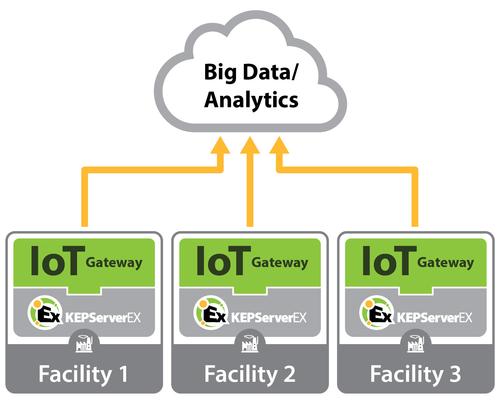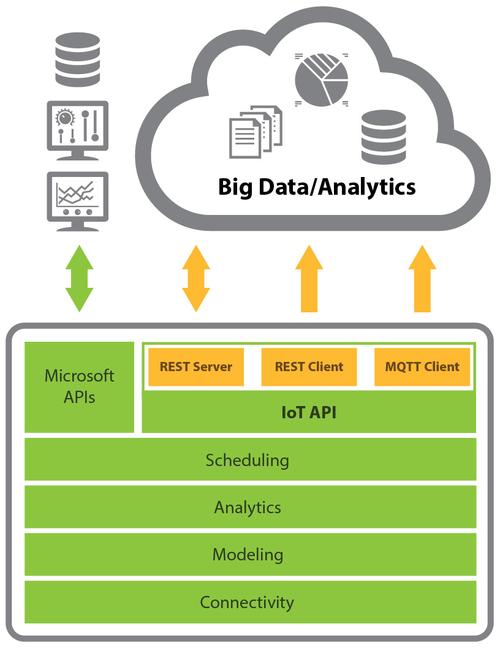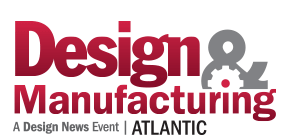IoT Solves Track and Trace
IoT systems are helping auto OEMs track production as well as production problems.
June 3, 2016
Kepware Technologieshas been working with automotive OEMs and their suppliers to improve traceability for parts. The goal was to make production data available on demand as well as keep track of parts and assemblies -- where they came from and what vehicles they’re going into. To meet these requirements, Kepware developed a system to connect the various PLCs on the factory floor to the manufacturing execution system (MES), using Internet of Things (IoT) technology.

Plant data gets directed to the cloud for analysis.
(Source: Kepware)
As long as you’re connecting the PLCs, why not also use the data to enhance plant operations? “The auto suppliers need to track and trace production data for their OEM customers,” Alex Herbert, IoT manager at Kepware, told Design News. “Then we leverage that data from the plant floor by taking the machine data to the business system. We’re changing how we collect data and distributing it.”
Since implementing the IoT Gateway, Kepware auto supplier customers are able to provide their OEM customers with the product traceability they require. The goal is increased supply chain visibility to help automotive OEMs satisfy regulatory requirements and improve overall product quality. Potentially, auto recalls will be smaller in number, since faulty parts and assemblies can be tracked from the car back to individual batches from specific suppliers. “The OEM customers have always been asking for the data. If you’re making air bags and there’s a recall, you want to trace it back to the exact time it was manufactured. These trace and track needs have always been there,” said Herbert. “You don’t have to go back and say, ‘Where was the problem?’ You know exactly where it is. The OEM customer has data. It would have come later on, post process, but now they can visualize it during the process.”

Plant data gets directed back to the plant for scheduling, analytics, and track and trace.
(Source: Kepware)
In many ways, the technology to support these track and trace functions is not new. Coordinating it and deploying it effectively is new. “They were able to gather it before, but it took multiple layers of architecture. Now with IoT, we’re able to provide it just-in-time, just-in-sequence, and expose the real-time data in real time,” said Herbert. “It makes the data delivery a lot faster. It required lots of custom development and coding. The data needed to be customized in OPC UA. The most lightweight option was to pump the data right into the IT system.”
 Don’t Get Left Behind. Plan how to best merge your workers into the sensor-rich, big data world of the Industrial IoT at Industry 4.0: Smart Manufacturing, part of Atlantic Design & Manufacturing Expo, June 16 in New York. Register here for the event, hosted by Design News’ parent company UBM. Enter promo code NY16DN for your FREE Expo pass & 20% off Industry 4.0 Conference.
Don’t Get Left Behind. Plan how to best merge your workers into the sensor-rich, big data world of the Industrial IoT at Industry 4.0: Smart Manufacturing, part of Atlantic Design & Manufacturing Expo, June 16 in New York. Register here for the event, hosted by Design News’ parent company UBM. Enter promo code NY16DN for your FREE Expo pass & 20% off Industry 4.0 Conference.
Herbert noted that with the IoT system in place, operators on the machine floor see communications moving much faster, and the Quality Assurance department has the industrial data they need in order to analyze production quality. One goal is to give executives at the boardroom level the ability to access and leverage operations data in order to boost efficiencies across the organization.
Solving the War between IT and OT
One of the inherent challenges to gathering and distributing plant data is to get the IT team and the operations team (OT) on the same page. There is a cultural barrier between OT and IT, since traditionally they have conflicting missions: The IT department operates at a high level compared to the shop floor and they don’t speak the same language.
Part of Kepware’s goal was to broker peace between the two groups. “The challenge is to get the IoT data into the enterprise system,” said Herbert. “The shop guys know where the data is, but the IT department doesn’t know where the shop floor data is. Now they’re coming together. The IT guy now has to work with a controls engineer so he needs to know how it works and how to take the data and make it available to the entire enterprise.”
READ MORE ABOUT THE IoT:
The adjustments in data collection and delivery are designed to satisfy the IT department without compromising plant operations. “The track and trace system keeps the control guy feeling safe. He’s still using the same control system. There is just an additional data stream coming out of the plant floor,” Torey Penrod-Cambra, director of communications at Kepware, told us. “We send the data by OPC, and we also send data to the enterprise.”
Rob Spiegel has covered automation and control for 15 years, 12 of them for Design News. Other topics he has covered include supply chain technology, alternative energy, and cyber security. For 10 years he was owner and publisher of the food magazine Chile Pepper.
About the Author(s)
You May Also Like


.jpg?width=300&auto=webp&quality=80&disable=upscale)


